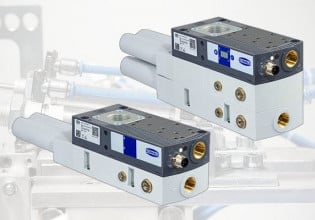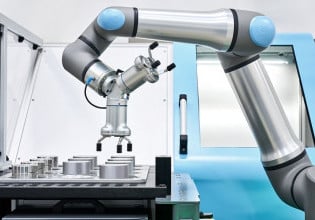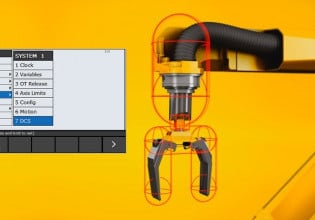Balluff Announces Capacitive Level Sensor With IO-Link Technology
Balluff has released a new capacitive sensor with IO-Link communication technology designed to detect product levels through the walls of plastic or glass storage containers.
Determining product levels within a storage vessel can sometimes be a difficult endeavor. Depending on the product, you might not be able to use traditional level sensors that are submersed into the product. Highly corrosive materials such as acids, or fluids with high viscosity tend to not work well with submissive sensors. Ultrasonic and optical sensors, both of which rely on reflection, can sometimes struggle with transparent or solid products, and must be placed inside the vessel.
Balluff Object And Level Sensing
Balluff, known worldwide for its vast product line of automation sensors, connection technology, machine vision, and safety components, has recently added a new capacitive sensor to help with detecting vessel fill levels across a wide range of products.

The new capacitive sensor from Balluff can detect fill levels through the walls of a storage vessel. Image used courtesy of Balluff
Capacitive vs. Inductive Sensors
A capacitive sensor detects objects at a distance using electrical capacitive coupling. It is common to see inductive and capacitive concepts in similar electrical contexts, but an inductive proximity sensor uses eddy currents to detect objects, so those objects must have some amount of ferrous properties.
With a capacitive sensor, on the other hand, as long as the object has a dielectric constant different than air, the sensor will detect the object. Therefore, non-metallic materials such as wood, paper, glass, or even plastic can be detected using a capacitive sensor. A common use for the capacitive sensor is for level detection.
Cube-Style Capacitive Sensor
The BCS01AJ is the newest addition to Balluff's line of non-contact capacitive sensors. The cube-shaped sensors can be attached to the outside of vessels, one for the upper level and one for the lower level detection. The sensor can detect non-conductive materials through plastic and glass up to 6mm thick with a simple calibration setup process.
A discrete output signal can be configured as PNP or NPN, but the sensor also comes equipped with IO-Link technology. With IO-Link, not only can you detect the level of product in a tank, but you also get extended diagnostic information about the sensor. The sensor can also accept parameters and configuration adjustments over the IO-Link protocol.
The BCS01AJ has a sensing range from 1 to 20 mm, an operating temperature of -20 °C to 85 °C, and requires a supply voltage of 10 - 30 VDC. Connecting the BCS01AJ is simplified with the industry-standard 4-pin M12 connector and a relatively small size of 40 mm x 40 mm x 10 mm.

A variety of capacitive sensors and form factors are found in the Balluff product catalog. Image used courtesy of Balluff
Applications of Level Sensing
Many times in automation, you might only require a high and low limit level sensor on a tank. The filling process starts when the low-level sensor is off and stops when the high-level sensor is on. But what if the high-level sensor is faulty and doesn’t come on? Your vessel will overfill, causing a spill that could endanger personnel. The same is true with the low-level sensor; if the sensor doesn’t turn off, the vessel won’t fill, and downstream pumps could be damaged.
By using a level detection sensor that has IO-Link technology, checks and faults can be put in place to detect a faulty sensor and report it to the operator. Setting parameters also becomes a lot easier with IO-Link. Typical sensors require different part numbers or changing small switches within the sensor. With IO-Link sensors, the configuration is saved in the PLC code and sent over the industrial protocol, so if the sensor is replaced, the configuration is saved in the code and no additional time will need to be spent configuring.
Using advanced sensors that detect non-conductive materials can save time and money with less downtime and faster recovery.






